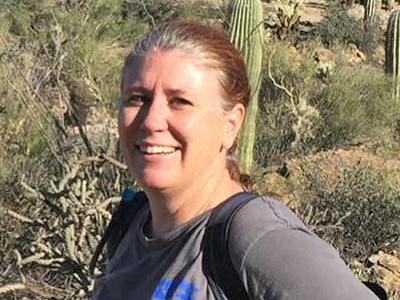 by Cyndi Tuell
by Cyndi Tuell
They say the idea of Wilderness needs no defense, but that Wilderness just needs defenders. For the past five years Wilderness Watch has worked to defend Wilderness areas in the Tonto National Forest from two agencies that should be protecting rather than degrading these wild places. Both the Arizona Game and Fish Department (AZGFD) and the U.S. Forest Service have been fighting—under the guise of “management”—to unlawfully land intrusive, noisy, and dangerous helicopters in Wilderness areas to track, trap, and relocate iconic bighorn sheep.
What both agencies really want to do to these wild, far-roaming animals is treat them like livestock, ranching them to ensure a “huntable” population. The proposed plan is to repeatedly land helicopters in Wilderness, catch sheep, take their blood, put collars on them, and monitor sheep movements constantly. This is antithetical to the very idea of Wilderness. Wilderness is where motorized use is prohibited. It is supposed to remain free from human manipulation. These actions will harm the sheep and other wildlife.
In 2014, more than half of the 31 sheep the AZGFD captured in Yuma and moved to mountains near Tucson using helicopters died as a result of relocation efforts. Some died during capture, some died during the flight, and some died in their new and unfamiliar surroundings. This same year, the AZGFD pushed the Tonto National Forest to allow helicopters to land hundreds of times a year to harass and move more bighorn sheep. Wilderness Watch and our allies pushed back hard on this unlawful plan because wild sheep in Wilderness areas should be protected from the intrusions of machines and man’s hubris.
And we won.
The Forest Service agreed that AZGFD’s plan was excessive and would likely violate environmental laws—including the Wilderness Act and the National Environmental Policy Act.
In 2019, the AZGFD was back at it. Wilderness Watch again had to defend Wilderness when the Arizona Game and Fish Department proposed up to 150 helicopter landings in the Four Peaks, Hellsgate, Mazatzal, Salt River Canyon, and Superstition Wildernesses to capture and collar bighorn sheep. The wildlife “managers” want to capture and monitor these wild sheep, day and night, landing their helicopters in our forests, under the guise of managing disease outbreaks. These same wildlife managers refuse to remove the main source of disease to wild sheep—domestic sheep. They refuse to protect wildlife corridors connecting Arizona’s mountains so bighorn sheep can move as they need to, ensuring healthy populations and biological diversity in wild populations.
We objected to this new plan last October because the project fails to advance the purposes of the Wilderness Act or Wilderness designations. We advocated for the agencies to consider managing only those bighorn herds that are outside of Wilderness, but the Forest Service approved the project anyway.
These intrusions into Wilderness areas are unnecessary, doing more harm than either agency will admit. Wild sheep should be allowed to move about the landscape on their own, finding habitat that suits them best. These agencies should do more to protect wildlife habitat and wildlife corridors. The best way to prevent the spread of disease to wild sheep is to limit the places domestic sheep can graze. The solutions are simple, but the agencies refuse to keep the wild in wildlife.
Learn more about this issue: bit.ly/35Fb7nK
------------------
Cyndi Tuell is a member of Wilderness Watch's board of directors. She has worked as an attorney, consultant, and activist since 2007, focusing on public lands management issues related to roads and motorized recreation in national forests in New Mexico and Arizona. Recently, Cyndi focused her public lands work on protecting natural resources in the borderlands. A native of Tucson, Arizona, Cyndi is an avid hiker, backpacker, and defender of wild places. She received the Nancy Zierenberg Sky Island Alliance Advocate award in 2013 and was named the Sierra Club Grand Canyon Chapter’s 2015 Conservationist of the Year.
 There is an art of conducting oneself in the lower regions by the memory of what one saw higher up. —René Daumal, Mount Analogue
There is an art of conducting oneself in the lower regions by the memory of what one saw higher up. —René Daumal, Mount Analogue
 by Cyndi Tuell
by Cyndi Tuell